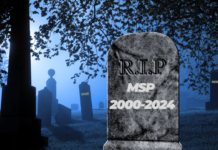The distinctive thing about it is that it does email on the move. Nothing special about that, you may say. After all, zillions of phones do email. Ah yes, but have you ever tried using them for that purpose? It makes Waiting for Godot seem like a blur. The thing that makes the BlackBerry special is that your email is ‘pushed’ to the phone via a proprietary system. Every time you look at it there will be an orderly queue of little icons in which emails sit demurely alongside text messages. And if you choose to reply to any of them, they positively swoosh away after you hit ‘send’, enabling you to amaze friends, colleagues and possibly even an employer with your diligence and zeal.
Now of course to many people the idea of being bombarded with email is a vision of hell. It means being at the mercy of one’s colleagues or – worse – one’s boss. But for more networked types, once you get the BlackBerry habit, there is no going back. (I speak with feeling on this matter.) These factors have combined to make it a very hot technology with companies and – increasingly – governments (of which more later).
The BlackBerry system belongs to a Canadian company called Research in Motion (RIM). For years, RIM has been pursued through the US courts by a small outfit named NTP, which owns patents on wireless-data systems filed by the late Thomas Campana, an inventor. NTP claims that RIM’s system infringes five of these patents and has been seeking a legal injunction to shut down the BlackBerry service unless it is paid eight per cent of RIM’s sales in America until 2012 – when the contested patents expire.
RIM lost the first round of the case in 2002 and was ordered to pay the damages. The injunction to switch off the BlackBerry service was postponed pending appeal. From then on, things get hazy. In March 2005 the two companies negotiated an apparently satisfactory settlement in which RIM agreed to pay NTP $450m. They even got to the point of issuing a joint press release. But by June, that deal had unravelled (RIM subsequently attributed the breakdown to NPT demanding terms that would have put it out of business). Then last October the US appeals court issued a judgment which substantially upheld the earlier verdict.
So the prospect of an injunction to shut down the BlackBerry service in the US was on the table – a prospect that is causing panic and angst in corporate America, which has become hooked on the technology and is terrified by the prospect of losing it. On Friday, the case went back to the judge. He declined to make an immediate ruling, but made it clear that a decision can be expected soon.
So at one level, the dispute has finally reached crunch-point. But meanwhile, over in another part of the forest, strange things are going on. Firstly, the US government is insisting that if the court does grant NTP an injunction and shuts down BlackBerry, all federal, state and local government users must be exempted from the service ban. ‘The injunction would literally prevent RIM from providing the services that would be essential for the federal government, as well as state and local governments, to continue their use of the BlackBerry devices,’ the Department of Justice stated in a court filing. It’s not clear what legal justification – if any – there is for such a stance, but somewhere along the line national security seems to have been invoked, because the Pentagon has figured in some of the discussions with the court
And this, in turn, reveals something interesting about the BlackBerry technology. In addition to standard SMS messaging and email, BlackBerries can communicate with other BlackBerries in a direct way. It’s called ‘PIN messaging’: each handset has a unique PIN, and if you know what it is, you can send messages directly to it, bypassing the usual email and SMS systems. Why is this interesting? Well, remember that in major terrorist incidents, mobile phone networks rapidly become overloaded and unusable for voice and SMS communications. But the BlackBerry PIN message still gets through (which is why UK government agencies are increasingly enamoured of the technology).
The second oddity is that while all the legal wrangling was going on, the US Patent Office – which originally granted the five patents – decided to re-examine them. Earlier this month the Office issued a ‘non-final’ rejection of the fifth NTP patent involved in the dispute – which means that it has now issued non-final rejections on all five of the patents at the centre of the legal tussle. But bizarrely, this is expected to have little impact on the judge’s verdict, for reasons that totally escape this non-lawyer. And in any event, NTP are expect to appeal against the Patent Office’s ‘non-final’ rulings.
So the BlackBerry saga has turned out to be a high-tech rehash of Bleak House’s Jarndyce v Jarndyce. And, as in the Dickens novel, nobody comes out of this looking good. RIM was foolish to have ignored NTP’s claims early on, when it could have settled for a modest amount. But it didn’t, and its product took off and suddenly made it a valuable target, which in turn stiffened the resolve of NTP’s lawyers to stick with the case.
The story also highlights the absurdity of the legal chains that now entangle the technology industry. After all, NTP makes nothing, delivers no service, makes no contribution to society other than by paying its taxes. RIM has created a service that apparently offers fantastic benefits to consumers – and may enhance governments’ ability to communicate in crisis situations. Yet it’s RIM which may go under. It’s daft. But that’s intellectual property for you.












